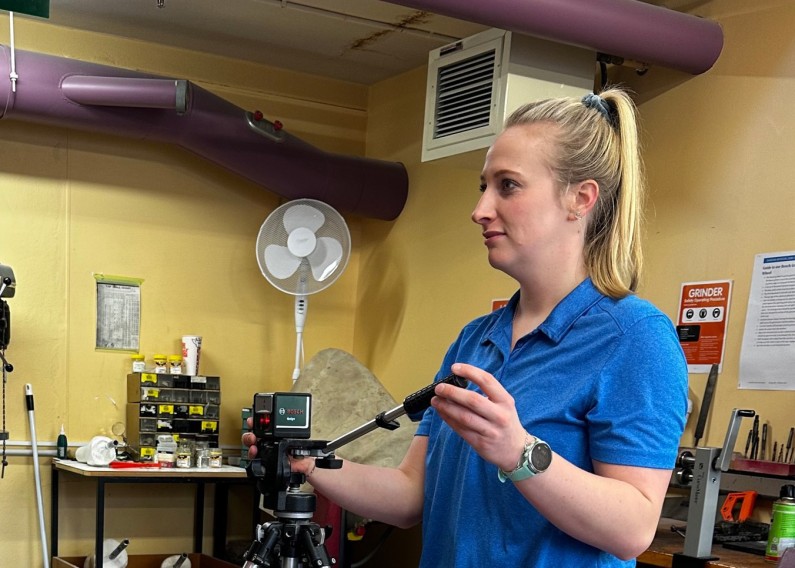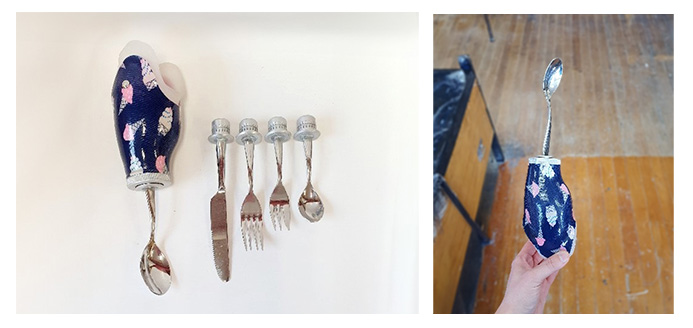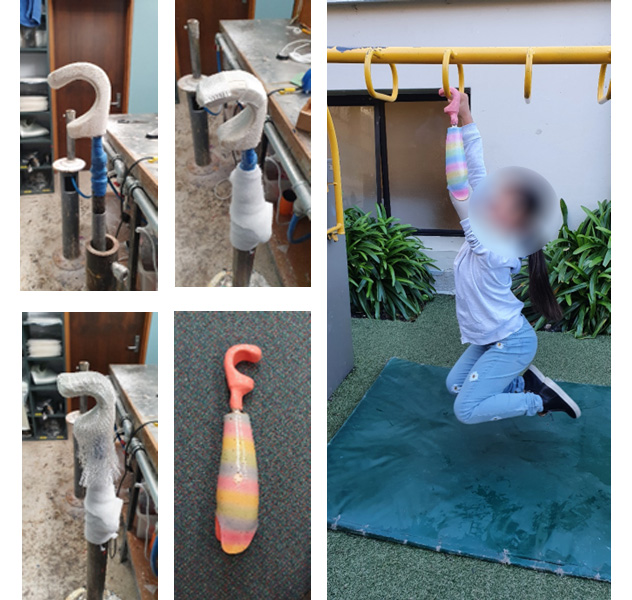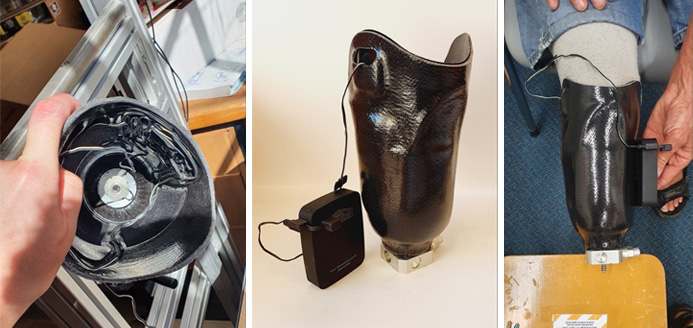Peke Waihanga ‘Inspector Gadget’ Helps Patients Become Super Humans

Peke Waihanga has a team of ‘inspector gadgets’ who make adaptive devices so amputees can overcome the challenges they face every day.
Thursday (7 September) is Superhuman Day, which honours people with disabilities who persevere and succeed despite the many challenges they face. Peke Waihanga Dunedin technician Rebecca Jones is one of many Peke Waihanga ‘inspector gadgets’ who use their creativity to try and make life a little easier for amputees.
She has developed custom-made devices to aid amputees with everyday activities.
Rebecca has developed an eating device to enable an 11-year-old patient to use the utensils she chose especially.

Rebecca drilled out a wrist insert and then ground the utensils down to enable them to slot inside. The socket was made shorter to accommodate the bending motion of eating. All the utensils had to be cut and smoothed off to shorten their length and then added to the wrist units with resin put in place and silver spray-painted.
A spoon, knife, fork, desert fork and teaspoon were added to separate wrist inserts. The spoon was bent to make it easier to use. Aluminium inserts were used to reduce the weight of the device and a silicon insert made with push rivets used into the socket.
Rebecca next developed a hook for using monkey bars for the same 11-year-old enabling her to play with her friends in the playground when previously she had been feeling really left out.
Because the patient was a Ministry of Health patient, Rebecca had to come up with a low-cost solution. She used an old hook from the store, chopped off the thumb piece and bent the hook into shape. Once it was the shape required, two-part foam was added and then shaped using a bar as a guide to ensure the hook could come on and off the bar. The inner hook was smoothed so it would slide on the bars. Using an old hook meant it could also be threaded into the wrist for the socket.

Once completed Rebecca went with the patient to the nearest playground to test it out. “Wow, her smile was the most incredible thing,” says Rebecca of the successful trial.
Rebecca is also developing a heated socket because South Island patients frequently suffer from cold stumps. She is using heating pads and a battery pack with a perlon laminate that touches the liner.

She is also experimenting with using possum fur to prevent heat loss through the pylon. Early results have been successful in heating the stump up but there are still issue to be solved, including the short recharge life of batteries with the heating pads on high.
Back

